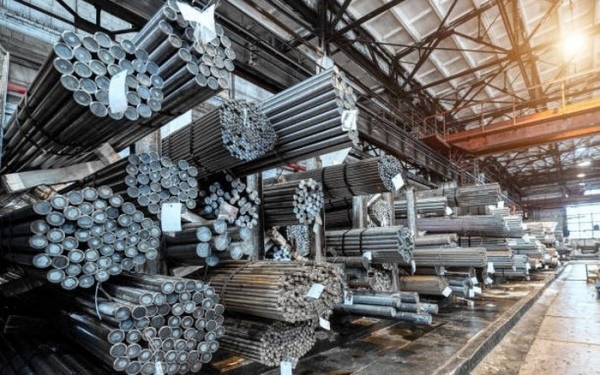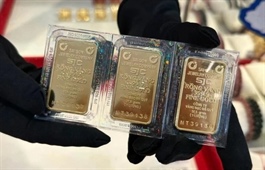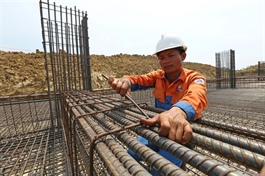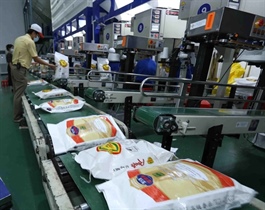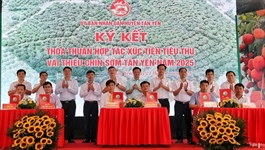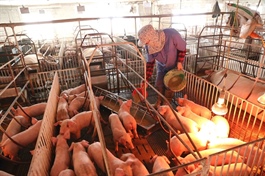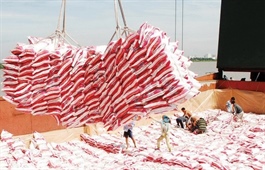Steelmakers shift gears as tariff pressures mount
Steelmakers shift gears as tariff pressures mount
Vietnam's steel industry is facing sharp export declines amid turbulent shifts in global trade policies, prompting local producers to pivot towards the domestic market to offset losses and explore new trade opportunities.
According to data from the National Statistics Office under the Ministry of Finance, Vietnam’s steel export value dropped by 15 per cent on-year in May, bringing in just over $600 million.
|
In the first five months of 2025, total steel exports amounted to $3.09 billion, down 23.5 per cent compared to the same period in 2024.
The United States, a major export destination, has seen the sharpest decline.
Vietnam’s steel exports to the US fell to $308.4 million in the first five months of the year, a staggering 49 per cent decrease on-year.
Concurrently, the average steel price dropped 27 per cent, falling from $34.15 per tonne to $24.92 per tonne.
Steel prices came under renewed pressure after the US raised import tariffs on steel and aluminium from 25 per cent to 50 per cent on June 4, a move aimed at protecting domestic manufacturers.
In addition to the universal 25 per cent import duty, Vietnamese steel producers are also facing potential anti-dumping tariffs on galvanised steel products.
In early April, the US Department of Commerce announced preliminary findings from an anti-dumping investigation into galvanised steel imports, launched last September.
The preliminary duties are substantial, with major steelmakers bearing the brunt, such as Hoa Sen Group facing a 59 per cent tariff; Hoa Phat Group and Nam Kim Steel subject to 49.42 per cent, Ton Dong A 39.84 per cent; and other firms 88.12 per cent.
These rates are not final, with the US Department of Commerce expected to issue a final ruling on August 18, with a conclusive decision due in October.
Assessing the impact of external developments on the domestic steel industry, Tran Hoang Son, chief market strategist at VPBankS, noted that if President Trump's threat to impose 50 per cent tariffs had emerged two or three months earlier, it would have posed significant disruption to Vietnamese steel and galvanised steel exporters. Imports of Vietnamese steel into the US have already declined markedly since tariffs were enforced in April.
Despite the tough tariff environment, the VPBankS analyst believes that the worst may be behind for the rest of the year, arguing that the current impact will be limited, even under heavy-handed US trade policies.
Moreover, opportunities have emerged from this crisis.
For example, Hoa Phat has managed to continue exporting steel tubes to the US without incurring anti-dumping duties, by certifying that their products originate from Vietnamese-produced hot-rolled coil (HRC).
According to Nguyen Thi Thu Hang, an analyst at Vietcombank Securities (VCBS), this not only allows Hoa Phat to boost steel tube exports but also opens up new sales opportunities for domestic galvanised steel producers that meet origin requirements and qualify for tariff exemptions.
Additionally, preliminary results from Europe’s anti-dumping probe into HRC imports have shown that the company is likely to face a zero per cent tariff, providing a potential competitive edge in the EU market.
While exports are shrinking, the domestic market is expected to help mitigate the impact.
In the first quarter (Q1) of this year, Hoa Phat reported a 21.9 per cent on-year increase in revenue and a 16.5 per cent rise in post-tax profit. Much of this growth came from higher domestic sales of construction steel and HRC.
Shinhan Securities forecast that Hoa Phat could achieve over 20 per cent growth in steel consumption volume this year, supported by the commercial operation of its Dung Quat 2 plant and improving macroeconomic conditions.
Hoa Phat is not alone. Hoa Sen Group saw domestic sales of galvanised steel surge 41 per cent in Q1, partially offsetting a 38 per cent decline in exports. As a result, the company’s Q1 revenue fell just 9 per cent on-year.
In contrast, Nam Kim has struggled to make up for declining exports. Domestic sales remain sluggish, leading to a 23 per cent drop in Q1 net revenue and a more than 50 per cent fall in profits compared to the same period last year.
Looking ahead, BIDV Securities Company (BSC) noted in its Q2 outlook that domestic steel consumption is rebounding, with a 53 per cent increase in Q1 over the same period in 2024, largely thanks to a recovering real estate market.
With the government’s recent imposition of temporary anti-dumping duties on Chinese HRC and galvanised steel, BSC expects this positive trend to continue and strengthen in the forthcoming quarters.
- 17:31 12/06/2025


